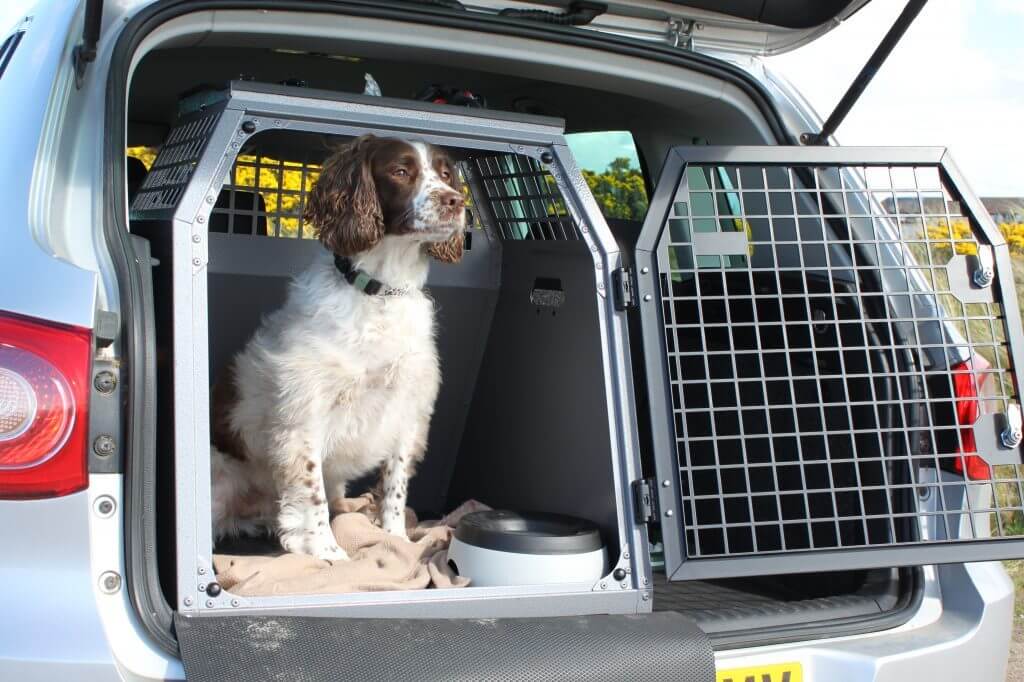
Pets play an important role in our lives; emotional support, cuddle buddy, and a fun companion. It can be hard to be away from our pets for a long period of time, which is why people often bring their pets along for the adventure. There are some critical safety tips to keep in mind if you travel with your pet in order to ensure their safety and well-being while on the road. Here are 8 safety tips for road tripping with your pet:
- Make an appointment with vet before trip. Make sure all vaccinations are up to date and necessary medicine is on hand. Tranquilizing a pet is generally not recommended because it could interfere with breathing. Consult with a vet for tips to keep your pet relaxed on the road.
- Get them used to the road. If you’ll be taking a several hour road trip with your dog or cat, it is advisable to get them acclimated to the car and driving on the road beforehand. Start with short drives around the neighborhood, and gradually increase the drive time.
- Pack a pet-friendly travel kit. Include food, a leash, portable water bowl, plastic baggies, necessary medication, a few favorite toys, and grooming supplies.
- Feeding. Always opt for bottled water, as tap water in new areas could result in an upset stomach. Feed your pet a light meal a few hours before departure to aid in digestion.
- Never leave your pet locked in the car. You should never leave your pet unattended in a vehicle- especially in the heat or freezing cold. Even with the windows open, the trapped heat or cold could cause heatstroke and/or hypothermia.
- Invest in a USDA-approved travel carrier. You may want to let your pet roam free to have enough room, but this is more dangerous and can lead to injury. You should secure a dog or cat in a suitable crate that leaves them with enough room. Check out crash-tested and approved crates and harnesses here.
- Keep pets in the back seat. The backseat is safest for animals because of the possible injury that could occur from the front-seat airbags. If the backseat is full of luggage or already occupied, make sure you turn off the passenger airbags and secure your pet in a crate.
- Stop every two hours or so. Let them stretch their legs, run around for a bit, and go to the bathroom. These quick breaks are also good times to give your dog some water in order to avoid dehydration.
It is also advisable to get a routine maintenance check of your car before going on a long road trip. Make an appointment with us today!




 Back to school can be a time of big decisions for parents and students. One of the most difficult is whether or not to take a car away to college. Consider the following when making this decision:
Back to school can be a time of big decisions for parents and students. One of the most difficult is whether or not to take a car away to college. Consider the following when making this decision: October is Tire Month at Car-X! Why? It is the best time of year to pay attention to your tires and make sure they are ready for the coming winter months. The importance of tire maintenance cannot be underestimated – they are your vehicle’s only contact with the road.
October is Tire Month at Car-X! Why? It is the best time of year to pay attention to your tires and make sure they are ready for the coming winter months. The importance of tire maintenance cannot be underestimated – they are your vehicle’s only contact with the road. Due to the excessive number of travelers driving during the holiday season, it is important to remember the following to avoid any possible trouble on the road.
Due to the excessive number of travelers driving during the holiday season, it is important to remember the following to avoid any possible trouble on the road.